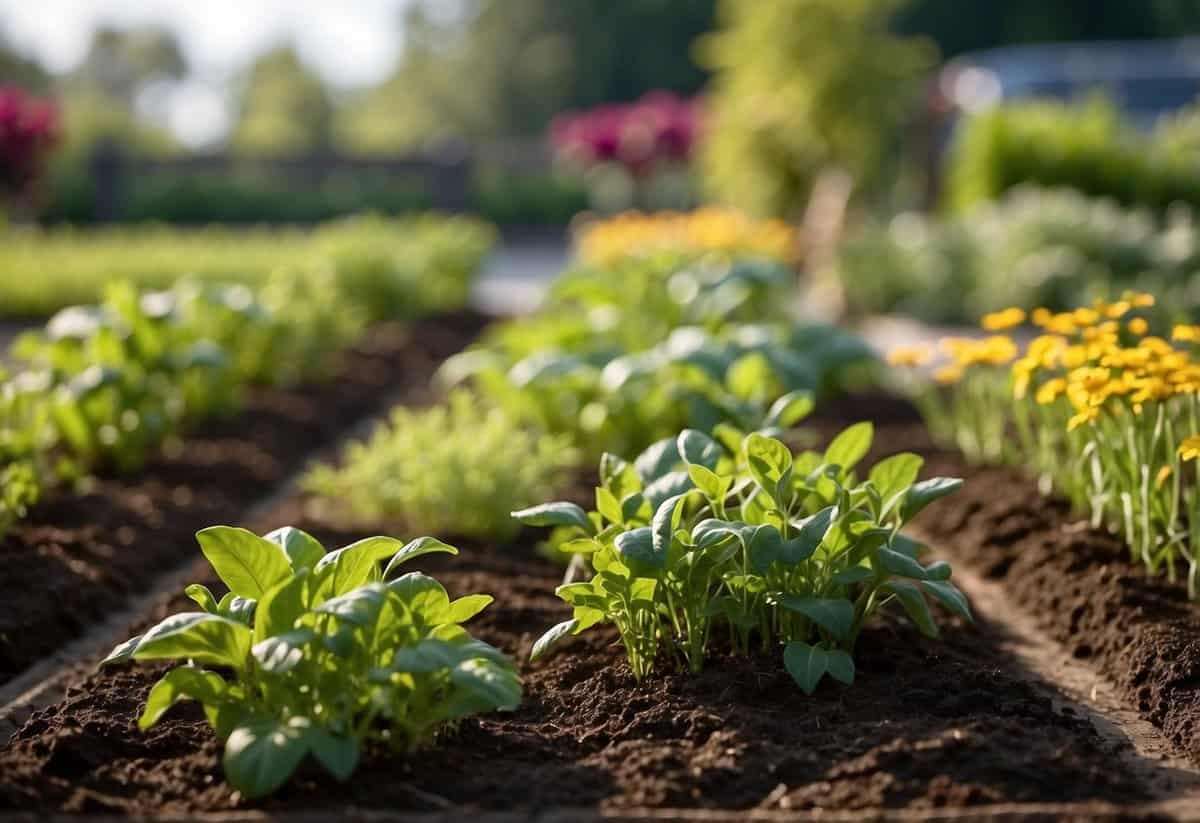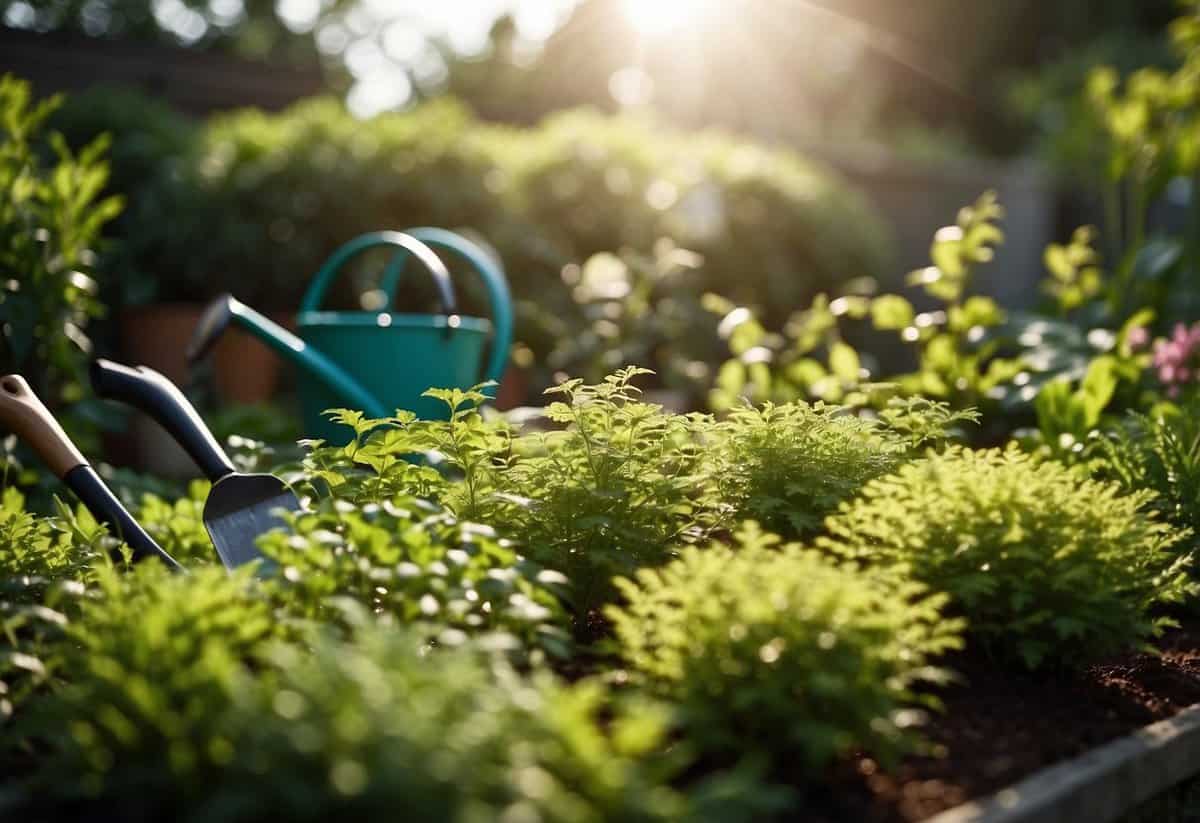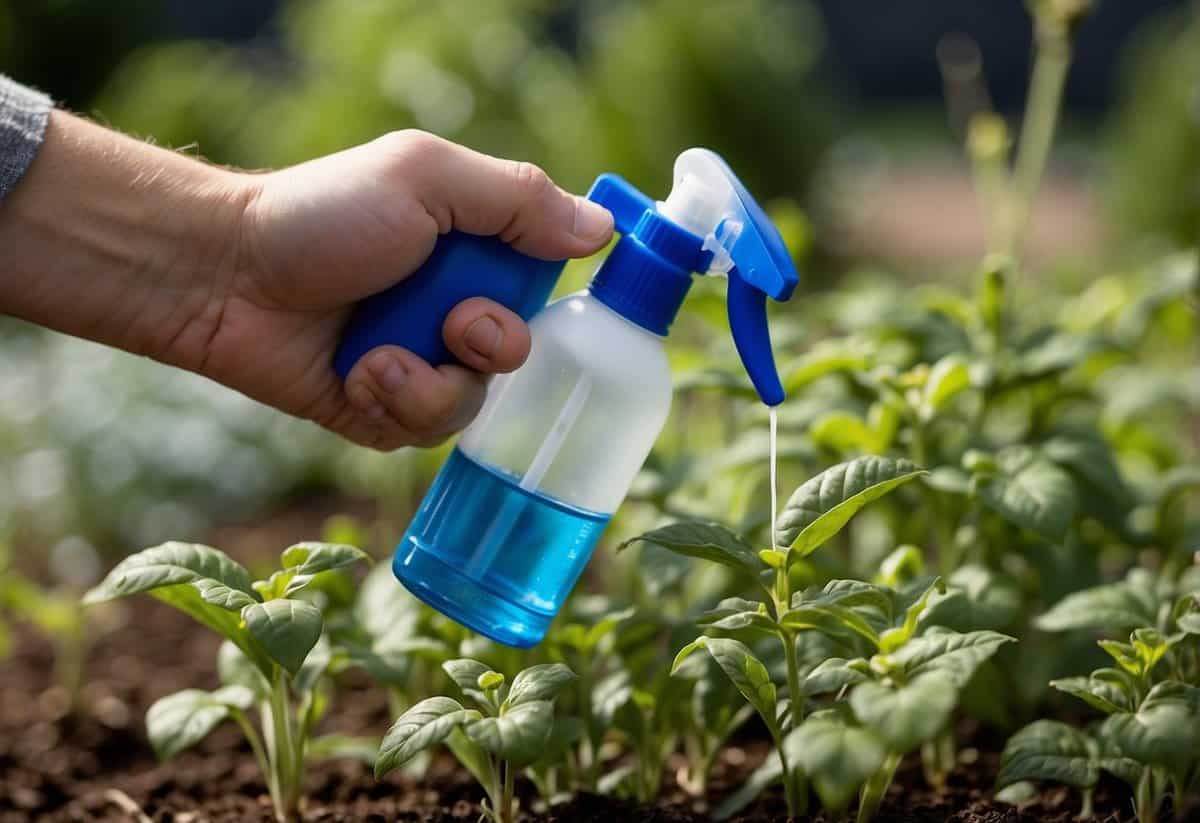Tips for a Weed Free Garden: Easy Tricks to Keep Your Plants Happy
Gardening can be a peaceful and rewarding hobby, but dealing with weeds can sometimes feel like an endless battle. Weeds compete with your plants for nutrients, water, and sunlight, which can stunt their growth and lessen your harvest. The good news is, with a few tried-and-true tips, you can manage and even prevent those pesky weeds from overtaking your garden.

Maintaining a weed-free garden doesn’t have to be labor-intensive. By implementing smart gardening practices, you can enjoy a beautiful, productive garden with less effort.
1) Mulch Your Garden

Mulching is a top strategy for keeping your garden weed-free. By covering the soil with mulch, you block sunlight from reaching weed seeds, reducing their chances of germination.
Choose organic mulches like straw, wood chips, or compost. These not only prevent weeds but also enrich the soil as they break down.
When applying mulch, make sure to leave space around plant stems to avoid rot. Mulch helps maintain soil moisture, which is beneficial for your plants. If done right, it can lead to a thriving and beautiful garden.
2) Hand-Pull Weeds Regularly

Hand-pulling weeds is effective for keeping your garden tidy. It’s especially useful for small weeds that haven’t produced seeds yet. Pull these weeds out before they become harder to handle.
After a good rain, the soil is softer, making it easier to pull weeds. If it hasn’t rained, you can soak the soil with hose water before you start.
3) Use Weed Barrier Fabric

Weed barrier fabric can help keep your garden weed-free. It acts as a physical barrier that stops weeds from sprouting and growing through the soil.
To use it, lay the fabric over the soil’s surface. Overlap the edges by 2-8 inches to prevent gaps.
Anchor the fabric with metal staples or rocks at the edges. This will keep it in place and stop weeds.
4) Apply Pre-Emergent Herbicides

Using pre-emergent herbicides helps stop weeds before they even sprout. They form a barrier in the soil, blocking weed seeds from growing.
It’s important to apply these herbicides early in the season. Look for a time when the soil temperature is about 55°F. This is usually in early spring.
For the best results, spread the herbicide evenly over your garden. If you’re using a granular product, mix it into the top 1-2 inches of soil with a rake. This ensures it will work effectively.
Carefully measure and follow the instructions on the package. Some pre-emergent herbicides can harm young plants if not applied correctly. Make sure to read the guidelines and take any necessary precautions.
For more details on how to use pre-emergent herbicides for vegetable gardens, visit GardeningVibe.
5) Plant Ground Covers

One of the best ways to keep weeds at bay is by planting ground covers. These plants spread quickly and form a dense mat that weeds can’t penetrate. Ground covers like Ajuga are perfect for this purpose.
Ajuga is an excellent choice because it grows well in shade and its leaves knit together to cover the soil. This creates a barrier that prevents weeds from getting a foothold.
Another good option is creeping thyme. It handles foot traffic well and spreads rapidly to cover the ground. Planting these types of ground covers can make your garden nearly weed-free.
Learn more about effective ground covers by visiting Bob Vila or Great Garden Plants Blog.
6) Keep Your Lawn Healthy

A healthy lawn can naturally resist weeds. Mowing is important. Always cut your grass to a suitable height, but avoid cutting more than one-third of the grass blade at a time.
Watering deeply and less frequently encourages deeper root growth. Ensure your lawn gets about an inch of water per week.
Fertilize your lawn properly. Use a balanced fertilizer to give your grass the nutrients it needs. Healthy grass can outcompete weeds.
7) Use Organic Weed Killers

Organic weed killers are a great way to keep your garden healthy and weed-free.
One effective method is using vinegar, which can be applied directly to weeds.
Boiling water is another simple option. Just pour it over the weeds to kill them instantly.
For a stronger option, mix rubbing alcohol with water and spray it on the weeds.
8) Edge Your Garden Beds

Edging your garden beds can help control weeds. By creating a solid border, you keep grass and invasive plants from creeping into your flower or vegetable beds. This barrier stops weeds before they start.
Using materials such as plastic, metal, or stone will create a neat, defined line. For practical tips, check out these expert techniques for stunning edges.
Another benefit of edging is soil retention. This keeps your soil and mulch in place, especially in sloped areas. This ensures that your plants get the nutrients they need, avoiding soil erosion.
9) Solarize The Soil

Solarizing the soil is an effective way to control weeds and pests using the sun’s heat. Cover the soil with clear plastic for four to six weeks during the summer. This traps heat, which kills weeds, insect larvae, and fungi.
Before laying the plastic, remove any plants or debris. Water the soil well to a depth of 12 inches, ensuring it is moist. Secure the plastic tightly to prevent heat from escaping. After several weeks, your soil will be healthier and much less prone to weeds.
Learn more about this technique from this helpful guide.
10) Cultivate Properly

When you cultivate, be careful not to disturb the soil too much. Overturning the soil can bring weed seeds that were buried deep to the surface, encouraging them to sprout.
Use a hoe or hand cultivator to gently stir the top layer. This helps to break up crusted soil, making it easier for water and nutrients to reach your plants.
Cultivate only when the soil is dry to avoid compacting it. Try to pass through your garden once a week with a light touch and keep an eye out for new weed growth.
Understanding Garden Weeds

Weeds are more than just a nuisance; they compete with your plants for nutrients and water. Knowing the common types and how they spread can help you control them effectively.
Common Types Of Garden Weeds
Garden weeds come in many varieties. Some of the most common include dandelions, crabgrass, and bindweed.
- Dandelions are easily recognized by their bright yellow flowers and fluffy seed heads. They thrive in lawns and garden beds.
- Crabgrass is an annual weed with a grass-like appearance that can take over your lawn if not controlled.
- Bindweed has vine-like stems and can strangle other plants as it grows.
Familiarizing yourself with these weeds helps you spot and remove them early, protecting your garden.
How Weeds Spread
Weeds spread in several ways. One of the most common methods is through seeds.
- Wind and water can carry seeds over long distances.
- Animals and humans can also transport weed seeds on their fur or clothing.
- Weeds with deep roots, like quackgrass, can regenerate from root fragments left in the soil.
Understanding these mechanisms allows you to take preventive measures, such as removing weeds before they set seed and avoiding disturbing the soil too much. Regular monitoring and prompt action can keep your garden weed-free.
Preventative Measures For A Weed-Free Garden

Taking a proactive approach to soil preparation and mulching can significantly reduce unwanted weeds in your garden. By following these strategies, you will create a more manageable and enjoyable gardening experience.
Soil Preparation Tips
Start by thoroughly clearing your garden area of any existing weeds and debris. This makes a clean slate for your plants and reduces the chance of weed seeds hanging around. Consider using a hoe or tiller to make the job easier.
After clearing the area, amend the soil with organic matter like compost or well-rotted manure. This improves soil health and structure, making it less hospitable to weeds. Healthy soil fosters strong plant growth, which can outcompete weeds.
Using a cover crop can also be beneficial. These plants cover the soil and prevent weeds from getting the sunlight they need to grow. Buckwheat is a popular choice since it grows quickly and crowds out weeds.
Mulching Techniques
Mulching is one of the most effective ways to prevent weeds. Apply a mulch layer between 1 inch and 3 inches deep. This covers the soil, blocking sunlight and making it harder for weed seeds to germinate.
Organic mulches like wood chips or straw are excellent choices. Wood chips are popular for pathways and are often easy to get cheaply or even for free if you know a local tree surgeon.
Remember to leave a small space, a few inches wide, around plant stems. This prevents the mulch from causing the plant stems to rot, ensuring your plants remain healthy and strong.
By consistently applying these mulching techniques, you reduce weed growth significantly and help maintain a more attractive garden.
Sustainable Weed Control Methods

Sustainable weed control focuses on methods that are safe for the environment and effective in maintaining a weed-free garden. Two key approaches include using organic herbicides and incorporating beneficial plants.
Using Organic Herbicides
Organic herbicides are a great way to combat weeds without harming your garden or the environment. These herbicides are made from natural ingredients like vinegar, lemon juice, and salt. They work by drying out the leaves of weeds or disrupting their growth.
You can make a simple herbicide at home by mixing one gallon of vinegar with a cup of salt and a tablespoon of dish soap. Apply the mixture directly to the weeds on a sunny day for the best results.
Another option is to purchase pre-made organic herbicides from garden centers. Brands with good reviews for effectiveness include EcoSMART and Green Gobbler. Ensure to follow the instructions on the label for safe and efficient use.
Incorporating Beneficial Plants
Certain plants can help reduce weed growth by acting as natural barriers. These plants, known as cover crops, compete with weeds for sunlight, water, and nutrients, thus hindering their growth. Examples of effective cover crops include clover, rye, and buckwheat.
Planting dense ground covers like creeping thyme or pachysandra can also keep weeds at bay. These ground covers spread quickly and leave little room for weeds to grow.
Additionally, incorporating plants with allelopathic properties can inhibit weed seed germination. For instance, marigolds and sunflowers release chemicals into the soil that suppress weed growth. Introducing these plants into your garden not only reduces weeds but also adds beauty and diversity to your garden.







